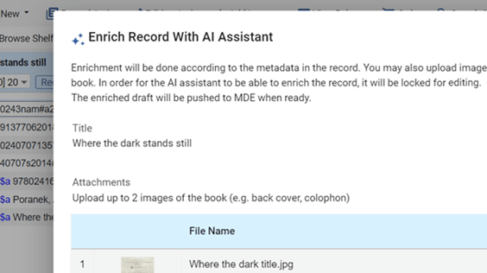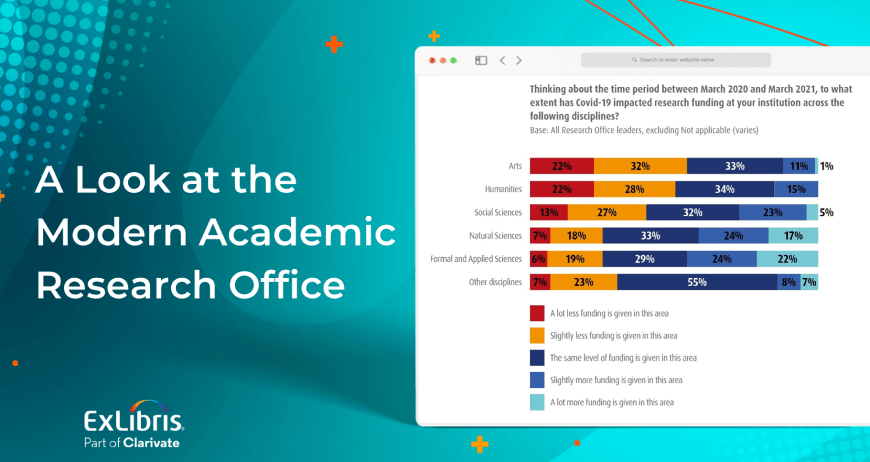Dani Guzman, Ex Libris
So far in our series on the current dynamics of academic research, we’ve examined key priorities for the research office and the effects of COVID-19 on researchers. In part three, we’ll be looking at the role of Open Access and how it fits into collaboration between the research office and the library, with a view to the future.
As before, our analysis here is based on a detailed survey commissioned by Ex Libris and carried out by the Alterline research agency. The respondents included hundreds of researchers and research office leaders in the US, the UK and Australia.
You might also be interested in

Pivot
Research
May 06, 2025 |
1 min read
Searching for Research Funding: A Look at the Data

Primo
Artificial Intelligence
Higher Education
Research
September 23, 2024 |
4 min read
Elevate User Engagement with Advanced Analytics: Ex Libris Primo Partners with Mixpanel

Artificial Intelligence
Higher Education
Research
September 19, 2024 |
1 min read
The Clarivate Pulse of the Library 2024 report is now available!
Great library experiences start with software
Download whitepaper

Alma
Artificial Intelligence
Higher Education
Open Platform
Research
August 21, 2024 |
4 min read
Artificial Intelligence Blog Series: Introducing the AI Metadata Assistant in the Alma Metadata Editor

Artificial Intelligence
Higher Education
Open Platform
Research
August 02, 2024 |
4 min read
Artificial Intelligence Blog Series: The Ex Libris Open Library Platform

Primo
Artificial Intelligence
Higher Education
Research
June 19, 2024 |
4 min read
Artificial Intelligence Blog Series: Meet Primo Research Assistant

Artificial Intelligence
Higher Education
Librarianship
Research
Teaching and Learning
April 06, 2024 |
2 min read
Ex Libris Welcomes Dr. Safiya Noble for an online talk about DEI, Technology and Libraries

Esploro
Research
February 10, 2022 |
8 min read
A Look at the Modern Academic Research Office


